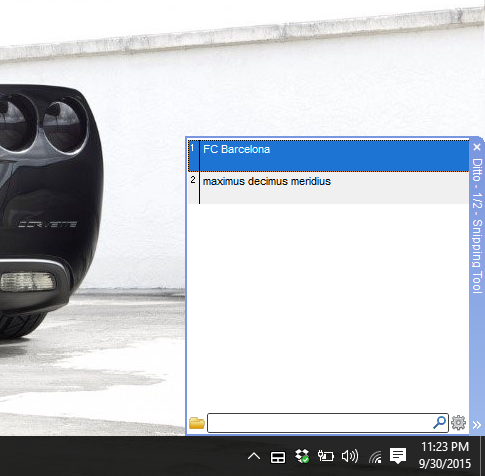The shop never closes when it comes to Fourmula-1 which is one of the most expensive sports on this planet. With the latest technologies and best engineers from around the globe developing Formula-1 cars 24×7, making those subtle changes that reflect in the lap times during the grueling races in Formula-1 world champion races. Sahara Force India owned by Vijay Malaya has been making steady progress building up the team in the last couple of years and looking forward to the 2013 season are keen on introducing 3D printing technology to cut costs and manufacture wind tunnel model components. 3D Systems has struck a deal with Sahara Force India according to which a multiyear agreement for technical partnership has been signed between the two, so we can expect to see some radial changes in Force India’s performance come this year’s F1 world championship.
Wind tunnel testing has been the forte of Formula-1 for so many years and hundreds of million dollars are spend on their development because the stakes are very high in this version of motorsports racing. So with the introduction of 3D printing technology which is known for its precise molding and layering properties the Formula-1 cars will surely shave off those crucial seconds during the race, in qualifying and during practice runs. As we have seen in the last few months 3D printing has relay takes the manufacturing world by the storm due to its unique properties to carve out physical objects to the last millimeter of detail.
3D Printing Industry got an exclusive interview with Sahara Force India’s Deputy Team Principal, Robert Fernley on this new partnership to make motorsports much more safer and also the improvements in the subsequent on road technology used in vehicles which is a direct implication of the developments taking place in Formula-1 cars. So, here is the transcript of the interview in detail.
According to Dr Vijay Mallya, Team Principal and Managing Director of Sahara Force India:
We’ve been working with 3D systems as a customer for many years, so we are delighted to forge stronger links with a company that is the market-leader for rapid prototyping technology. We use their technology on a daily basis to manufacture wind tunnel model components and this new relationship will hopefully allow us to get performance to the car faster.
Kevin McAlea, Senior Vice President and General Manager of 3D Production Printers, 3D Systems says:
We are excited to launch this technical partnership with the first ever Indian Formula One team. The opportunity to partner with emerging innovators like Sahara Force India provides tangible customer benefits that extend well beyond motorsports.
THE INTERVIEW:
3DPI: The original press announcement refers to Sahara Force India using 3D printing for wind tunnel models. Can you tell us how the team is using the technology?
RF: Sahara Force India uses 3D Systems’ rapid prototyping equipment to manufacture multiple quantity surveys of parts (as well as some single quantity) for the wind tunnel model as part of our aero dynamic programme. Aero dynamics is a key area of focus for delivering performance to the car, which is why the tunnel operates twenty four hours a day.
3DPI: Does Sahara Force India use 3D printing in other prototyping applications on the car and are there any production applications that the team would consider?
RF: Some rapid prototyping components [various processes] are now used on the race car, but due to machine size and material limitations its application is limited, but it’s useful for producing some titanium structures. We do use our rapid prototyping equipment to manufacture parts for the full size mock-up chassis model.
3DPI: What kind of benefits does the 3D printing technology provide for the team?
RF: For one-off components with a complex geometry the technology is very useful. The speed and accuracy of manufacture is the key benefit.
3DPI: What kind of changes does 3D printing offer with the future in mind and which areas of Formula 1 are most affected by this technology?
RF: In the future we expect rapid prototyping to allow for the production of larger pieces. There will also be expanded material availability, which should mean that more components of the actual race car can be produced.
3DPI: What are the most interesting areas of technological development within Formula 1 overall in the coming years?
RF: Aero development is always key and very complex, but the new power plant regulations for 2014 will focus the teams’ minds for the short term.
3DPI: Can you tell us about the relationship between 3D Systems and the Sahara Force India team?
RF: Our relationship as a customer is long-standing so it’s exciting to establish a stronger link with a company we know very well. We have a suite of SLA machines: 3 x Ipro 9000 and 2 x SLA 5000. We use the Ipros because they are the fastest SLA machine on the market; they also have a large build volume enabling us to process large quantities of parts quickly. The SLA 5000s are 15 years old and still operate well, which is testament to their quality.
We have a fully comprehensive service provided by 3D Systems on the Ipros, which includes all spares, next-day engineer call-out and scheduled routine maintenance.
3D Systems also provide all of our SLA resins. Going forward, Sahara Force India wants to explore the other 3D printing technologies, such as selective laser sintering and plastic jet printing from 3D Systems as part of this partnership.
Via: ForceIndiaF1/3DPrintingIndustry
Comments





